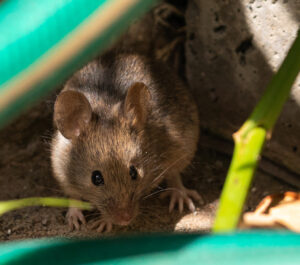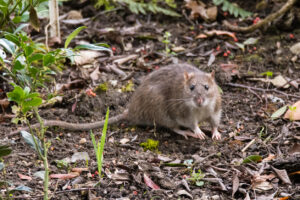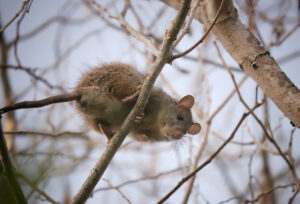
Rodent Control Experts – Geelong, Surf Coast and surrounding areas
To manage rats and mice problems quickly and safely it requires a professional rodent control treatment.
It’s important to correctly identify and understand the behaviour of the pest rodent species present, so the correct rodent treatment can be applied. When using rodent baits and traps, safety is the number one priority so it’s important to know what you’re doing. (Just throwing bait into a roof void is neither effective nor safe).
With rodents spoiling food, carrying disease and parasites, and damaging homes (chewing electrical wiring is a major cause of house fires!), it’s important that your home and family are protected from rodents.
Contact us to solve your rodent problem, effectively and safely.
Our professional rodent treatments
There are 4 key steps in our rodent treatment process:
Inspection to identify species, potential entry points and nesting areas
Discuss the proposed treatment plan with the customer, to make sure we are aware of any children and pets in the household, as well as any other concerns, to ensure we implement a safe rodent control program
Place the required rodent bait and traps to deliver complete rodent control
Provide rodent proofing recommendations to the client (Geelong can provide a quote for work)
We place our rodent baits in lockable baits stations for added safety.
How rodent baits work?
Rats and mice only need to eat a small amount of rodent bait to ingest a lethal dose. However, rodent baits are slow acting – it will take 4-7 days for an individual animal to die. The rodents gradually get more sluggish before falling unconscious and dying.
As it takes time for rodents to find and start to eat the bait, it can often take 2-3 weeks to gain control in homes (sometimes longer with larger infestations). This is particularly the case with rats, which are neophobic (frightened of new things).
SAFETY NOTE:
Rodenticides can have the same effect on other animals, as they do on rodents (including humans and pets). However, there are a number of factors that reduce the risks:
- We place baits in lockable bait stations
- We avoid placing baits where children and pets may come into contact
- The baits we use contain a bittering agent which makes them less palatable to children and pets
- Children and dogs are a lot larger than rats and mice and would need to eat a lot of bait for an adverse effect
- If a dog or child accidental ingest rodenticide they should be taken to a vet / doctor for treatment. If required, a vitamin K injection can be used to counteract the effect of the rodenticide.
Rodenticides can have an impact on native wildlife through eating it directly (possums) or through eating dead rodents (for example by birds of prey). This is one of the key reasons why we use lockable bait stations and why we ask our customers to pick up and bag any dead rodent they find (wearing gloves) before placing in the bin.
What to expect from our rodent treatments?
Mice treatments
Mice don’t travel far from their nests so, if you have a mouse problem in a residential situation, it will often mean they are nesting in the house. Mice treatments tend to work quicker than rat treatments, as mice are very curious and will often nibble new food sources as soon as they find them. As there is often only a short time between bait placement and the mice feeding, mice infestations can be controlled in as little as a week.

Rat treatments
There are two types of pest rats in Australia – brown or sewer rats which live in drains and burrows, and roof rats which will often nest in trees and roof voids. In contrast to mice, rats are neophobic, which means they are frightened of new things. As such, it can take a few days for the rats to even start eating the bait. Rat problems often take up to 2 weeks before elimination is confirmed.
In cases of a heavy infestation, it may take additional visits to get on top of a rodent problem. For commercial customers, regular rodent service programs are often required to keep the premises rodent controlled.


How to rodent proof your home…
With rats able to squeeze through a gap the size of the end of your thumb, and mice squeezing through gaps as small as your little figure, it can be a challenge to 100% rodent proof your home. However, there are some tips which can help…
Prevent rodents from entering the building
- Make sure all gaps are filled or blocked with a rodent proof material
- Cut back any vegetation that is over hanging the roof
- Add rodent “collars” to any vertical supports that could be allowing rodents to climb onto the roof
- Keep vegetation trimmed back from around the perimeter of the building. Not only will this reduce nesting areas, but it creates an open space (which rodents don’t like) which they would need to cross to access the building
Reduce the available food sources
- Make sure all garbage is in bins with tight fitting lids
- Make sure petfood and bird food cannot be accessed
- Clear away dirty dishes and any food spills without delay
- Make sure food is stored in cupboards, in rodent proof containers
Geelong Pest Control can help with your rodent proofing
We can provide basic rodent proofing to the obvious entry points and the ones that may be difficult to access. This doesn’t guarantee rodents cannot enter the building, but it’s a good start!
What are the signs of a rodent problem?
Most people won’t actually see the rats of mice that are infesting their home, unless there is a major infestation. Rats and mice are both shy and nocturnal so it is indirect signs of rodent activity that will be the first indications that you may have a rodent problem…
Footstep, scratching sounds and squeaking
Commonly at night and often in the roof.
Droppings
Both rats and mice will leave clusters of oblong shaped droppings and lots of them – mice will deposit over 50 droppings a day!
Damage to food, food containers and hard objects
Rodents chew to access food and chew hard objects to file down their teeth, which grow continuously. Look out for gnaw marks on wood and plastic.
Nesting material
Rats and mice will collect soft materials such as insulation, paper and grass to make their nests. Keep your eyes open for such material in strange places.
Burrows
Brown rats and mice will dig burrows outside, if there is nowhere to nest indoors, preferably in raised banks with vegetation for protection.
Smell of urine
If you have a significant rodent problem there can be a strong smell of rodent urine.


